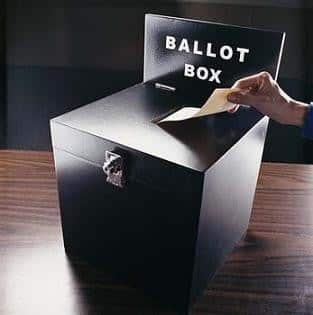In the United States, there is an election every four years to determine the president of the country. This statement does not tell the full story of the steps which need to be taken to become the president. It is a process which begins  about two years before the actual election itself. The first step towards becoming president is to declare one’s candidacy.
about two years before the actual election itself. The first step towards becoming president is to declare one’s candidacy.
When a politician wants to become president, he has the optional step of forming an exploratory committee. This has been done by candidates such as Rudy Giuliani and Barack Obama leading up to the 2008 election. An exploratory committee allows a candidate to quietly raise funds and test whether he or she would like to run for president. The announcement of an exploratory committee comes with a candidate filing papers to the Federal Elections Commission. The announcement of forming an exploratory committee as opposed to just filing papers also allows the candidate more of an opportunity to withdraw from the race if they feel the time is not right.
The presidential primary is essentially the first major step in choosing the next president of the United States. Primaries begin in January of the election year and conclude in June. The purpose of the primary is to give the party an idea of which candidates are most popular among the people of each state. After a couple of primaries, there are normally between 2-3 candidates who are competitive for the nomination. The primary process consists of two forms of elections. One of these elections is called a caucus. A caucus is an event held by the political party, as opposed to the state government. In the context of a primary, the caucus is a meeting of registered voters in a party, who decide which candidate they will choose to represent their state. The caucus occurs in such states as Iowa and Texas. A primary is the other type of election which occurs. There are two types of primaries, a closed primary and an open primary. In a closed primary, the only people allowed to vote are those who are registered in the political party (“Rhode Island Board of Elections Frequently Asked Question.”). In an open primary, anyone of legal age is allowed to vote (“Who May Vote in Primary). Primaries occur in states such as New York and California.
Each state has a certain number of people representing each area who known as delegates. They are people who are elected to the House of Representatives and serve their area. In the Republican Party, 1191 out of the total of 2380 delegates need to support one candidate in order for them to be declared the presumptive nominee (“Road to the White House”). In the Democratic Party, 2025 of 4049 total delegates need to support one candidate for a presumptive nominee to be declared (“Road to the White House”). The Democratic Party’s system differs slightly from the Republicans in terms of delegates. The Democratic Party has superdelegates to go along with delegates. Superdelegates are not attached to a specific state but have the right to endorse a specific candidate. Superdelegates are generally leaders from within the party. Approximately one-fifth of the delegates in the Democratic Party are superdelegates.
Delegates differ between states based on size and party system. In the Democratic Party, there is a proportional delegate system. This means that a candidate will get roughly the same amount of delegates as the percentages indicate. For example, in the New York primary, Hillary Clinton got 57% of the vote compared to Barack Obama’s 40%. Hillary Clinton won 139 of the 232 delegates, while Barack Obama won 93 delegates (“Election Center 2008 Primaries and Caucuses: Results: New York”). The number of delegates compares roughly to the percentage of the vote which each candidate received. The Republican Party relies on a completely different system, which is known as a winner-takes-all representation. For example, in the state of Missouri, John McCain received 33% of the vote while Mike Huckabee received 32 %(“Election Center 2008 Primaries and Caucuses: Results: Missouri.”). Although the race was very close, due to the system, John McCain won all 58 of the state’s delegates. A small amount of Republican states use the proportional system as well.
Different states have a different amount of delegates based on the size of the state. If a state is larger, then it will be represented by more delegates. For example, in both the Republican and Democratic parties, the state of California has the most delegates. California is also the largest state in terms of population in the United States. There are 441 Democratic delegates in California (“Primary Calendar: Democratic Nominating Contests”). There are also 173 Republican delegates in California (“Primary Calendar: Republican Nominating Contests”). In the Democratic Party, Wyoming and Alaska have the least number of delegates with 18 (“Primary Calendar: Democratic Nominating Contests”). In the Republican Party, New Hampshire has the fewest delegates with 12 (“Primary Calendar: Republican Nominating Contests”).
The final step towards choosing a candidate for president is the party convention. The parties also state their principles and their upcoming goals. A vice president is also nominated at the convention. The Democratic convention has the potential to be a brokered convention, which means that the nominee for president might not be decided until the convention because the delegate counts are so close. Also at these conventions, members of the party vote on different issues to determine the direction in which the party would like to go. The Democratic convention will take place over four days from August 25-August 28, 2008. The host city is Denver, Colorado. Meanwhile, the Republican convention is also a four day long event, taking place from September 1-4, 2008. The host city is St. Paul, Minnesota.
